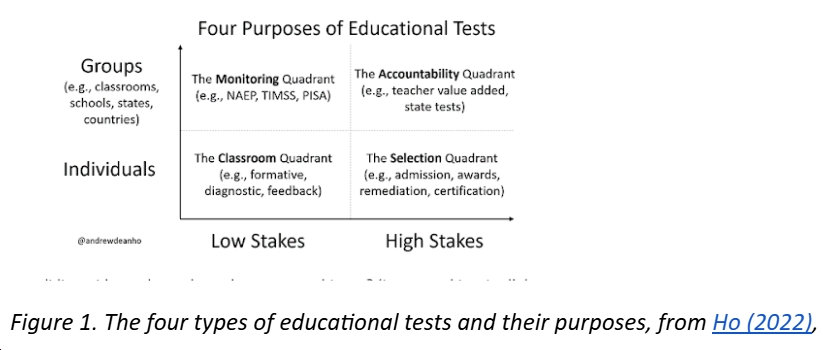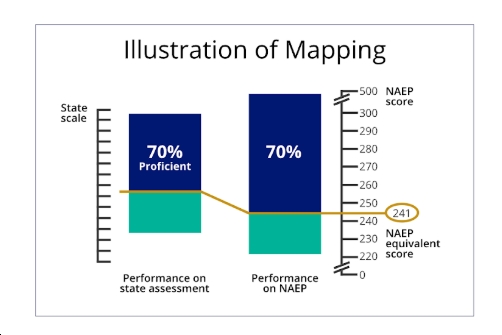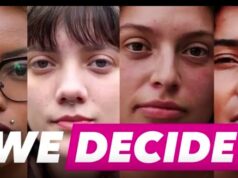by Marianne K. Burke, PhD, Virginia Grassroots Coaltion
Despite being in office for the past four years as Lt. Governor, Republican gubernatorial nominee Winsome Earle-Sears continues to present a flawed analysis of Virginia’s student achievement. She claims, as does the sitting Governor Youngkin, that previous administrations claimed students were learning when they were not, and passed students when they should not have. Both Earle-Sears and Youngkin refer to this as an “honesty gap”. Although for years they have been cautioned that those statements were invalid, both the current governor and lieutenant governor continue to use those claims in an apparent attempt to influence voters.
A major concern is that the administration’s inaccurate portrayal of Virginia’s public school system was used to justify the unnecessary overhaul of the Department of Education’s (VDOE) accountability system.
Essentially, the Youngkin administration created a fake problem which required an expensive and unnecessary solution. The fake problem was that Virginia’s student performance was lacking, but this “problem” was caused by the Youngkin administration comparing the wrong statistics from the National Assessment of Education Progress (NAEP) and the Virginia Standards of Learning (SOL) Tests (explained in sections below). Thus, the Youngkin administration reported that Virginia had been overestimating student performance and he accused the previous democratic administrations of creating an ‘honesty gap’. Youngkin used this “honesty gap” as the impetus to overhaul the accountability system, which has been expensive and disruptive for Virginia school districts.
At a recent Moms for Liberty Town Hall panel discussion of GOP candidates, Katie Gorka, Chair of the Fairfax GOP committee despaired that only 31% of 4th grade (and similarly, 29% of 8th grade students) could read with “proficiency” (i.e., above grade level). In fact, the figures Gorka, the Youngkin administration, and candidate Earle-Sears should have used are 58% and 66%, respectively, which means that Virginia’s 4th and 8th graders are well above the state national average in Reading at grade level. Correspondingly, 76% and 63% Virginia’s 4th and 8th graders (respectively) are at grade level in Math. In the following sections Below 4 Public Education will explain how the Youngkin administration and Earle-Sears came to use the wrong statistics. Despite published warnings about their error, the Youngkin administration and Earle-Sears continue to ignore those warnings.
What is the Difference Between the NAEP and SOL Tests?
The Youngkin administration and Earle-Sears conflate both data and the purpose of the SOL and NAEP tests. As explained by Andrew Ho, professor at the Harvard Graduate School of Education, the NAEP is a “low stakes” test that monitors groups (i.e., the states), not individuals. On the other hand, tests like Virginia’s SOL are “high stakes” tests, because they contribute to decisions about school certification and which students need additional help (figure 1). Direct comparisons of statistics of the two tests are not valid because the tests differ in who and how they test, and how the results should be interpreted and applied.

Figure 1. The four types of educational tests and their purposes, from Ho (2022),
Perhaps even more importantly, the Youngkin Administration and Earle-Sears not only made the egregious mistake of conflating terms used to compare results in the two tests, they then used their erroneous interpretation to cast aspersions on the achievement of students and performance of teachers in Virginia’s public schools! Apparently, they assumed the term “proficient” had the same meaning in both the NAEP and SOL test results, despite abundant literature that explained how the statistical terms that have the same name also have different meanings in the two tests.
The Youngkin Administration first published the error in 2022 when Youngkin’s Virginia Department of Education (VDOE) released a report on student achievement which made the incorrect claims that the SOL tests were overestimating performance of Virginia students. The VDOE claimed that more students should have failed because a greater proportion of students were classified as “proficient” in SOL tests results than in NAEP tests results.
Shortly thereafter the Washington Post explained the errors the Youngkin Administration made in their VDOE analysis, and further clarification was published by the Public Broadcasting System. Both publications explained that, although the NAEP and SOL tests use the same terms to categorize scores, the meaning of those categories differed greatly between tests. It was clear that direct comparisons of categories with the same name were not valid. But in the years since then the administration continues to use the same flawed reasoning which undercounts Virginia schools’ performance in both Math and Reading
The NAEP assessment sorts student scores into three achievement levels — basic, proficient, and advanced, which have different meanings than the SOL achievement levels despite the same names. The federal test makers who designed NAEP use “proficient” as a desirable or “aspirational” standard, while their “basic” category more closely correlates to achievement at a grade level. In fact, a multiple year comparison of NAEP and state tests revealed that “most state standards for both grades [4 and 8] and both subjects [Math and Reading] mapped [achievement at grade level] at the NAEP Basic achievement level” (Figure 2). As a result, the proportion of students performing at grade level should include students with scores in either the Basic or Proficient NAEP levels. Thus, the correct statistics are that 58% of 4th graders and 66% of 8th graders of Virginia students read at grade level in 2024, not the 31% and 29% figures used by the Youngin administration, VBOE, and candidate Earle-Sears.

Figure 2. The NAEP mapping study showed that “most state standards for both grades [4 and 8] and both subjects [Math and Reading] mapped at the NAEP Basic achievement level”. From the National Center for Education
Earl-Sears is Misrepresenting Virginia’s Performance
It is concerning that candidate Winsome Earle-Sears promises that if she is elected she will “peg the SOL scores to the NAEP scores” for Virginia for two reasons. First, this is pretty much what has already been approved for this year’s overhaul of the VBOE accountability system. The NAEP test is not designed to evaluate an individual student’s performance in a subject. Instead, the NAEP is designed to monitor learning across states, and to show where each state is ranked relative to the national average, primarily for reading and math. NAEP scores capture “two-year snapshots” of a small subset of students, and it is never the same group of students. As a result a high amount of variation among years should be expected.
In 2023, 4 Public Education again pointed out how Governor Youngkin was incorrectly interpreting NAEP scores and how his interpretation did not support his claim of an “honesty gap”. Yet his Lieutenant Governor, Earle-Sears, continues to share the misinformation. She should know better. She served on Virginia’s Board of Education; therefore, it is hard to believe that she doesn’t know the difference between the NAEP and SOL performance statistics.
Why is she conflating the NAEP and the SOL scores? Is it because Earle-Sears, like Youngkin, finds this line of fearmongering a politically expedient attempt to convince Virginians that our public schools are failing? Is this to help push the state toward privatization of public schools? Or is it just to win an election?
We need to remember that NAEP proficient scores are “aspirational” and a “flawed benchmark” and that “not a single nation can demonstrate that not even 50 percent of its students can clear the proficiency benchmark in fourth-grade reading”. It is essential that the next gubernatorial administration in Virginia better understand the intricacies and appropriate application of data from these two very different testing methods. They must be accountable to Virginians and accurately report what the NAEP and SOL scores indicate about our public schools and Virginia students.
The bottom line is that in contrast to what the GOP candidates are claiming in the 2025 gubernatorial campaign, the majority of Virginia students are learning appropriately and students in Virginia continue to do better than students in most other states. Virginia students score in the 4th quartile for 4th grade Math and 3rd quartile for 4th grade Math, 8th grade Reading, and 8th grade Math. Wasteful spending based on politically motivated misclaims is the opposite of what is needed.












![Video: Sen. Mark Warner Wonders, “if [Trump] starts ignoring court orders, the question is, do we have a constitutional democracy anymore?”](https://bluevirginia.us/wp-content/uploads/2025/10/warner1016-100x75.jpg)
